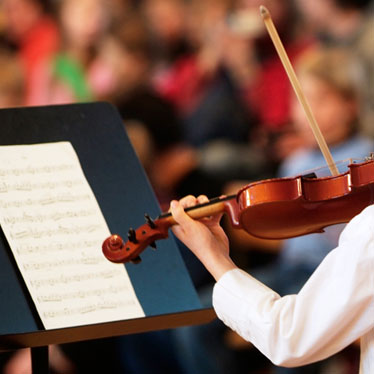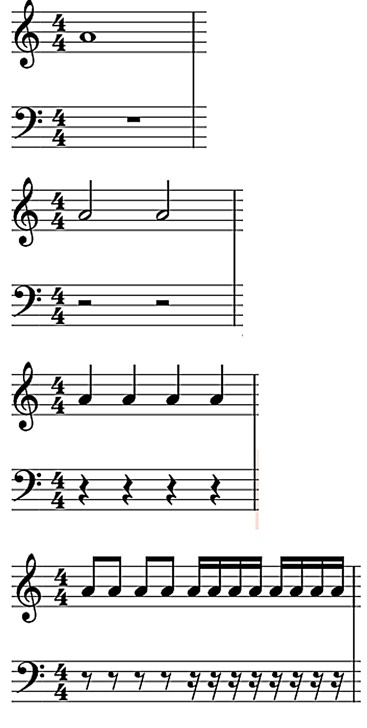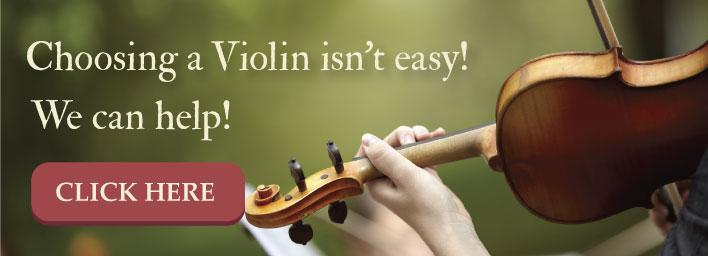5 Tips For Learning To Read Music For The Beginning String Musician

As a beginning string musician, you have a lot of stuff to learn. In addition to holding your instrument properly and training on how to actually make sounds with it, if you’ve never studied music before, you must learn to read it. Just like any language, music is written and read. Consider this: you go to a foreign country but can’t speak the language. Sure eventually you’ll be able to understand, but you’ll never be able to communicate deeply with the people around you unless you learn to read and write the language. The same is true with music. Although you can learn to play music without being able to read it, you won’t be able to play with others or explore new styles without knowing the language.
Don't worry though. These tips can help you if you’re a beginning string musician, or if you just think learning to read music would be cool.
1. Think of Music as a Language
Like previously mentioned, written sheet music is a way to communicate with other musicians. If you think about reading music like you would read a book, the overall "theme" of the piece can come through. However, like reading, at first it will be hard to “sound out” all of the words. Don’t worry about it. Eventually, you’ll have no problem.
2. Focus on the Basic Symbols
When you look at sheet music, you’ll see a number of symbols and markings that won’t mean much to you. Instead of feeling overwhelmed, focus on the essentials first. The staff, the note values, and the significance of the lines and spaces.
The staff is the ruled lines that hold the music. You can think of them as pages of a book, if that will help. The notes are written on the staff in specific places that correlate with the frequency measurement (pitch) of the sound, and you might want to think of these as words. The vertical lines of the staff indicate “measures” (sometimes called a bar), and you can think of these as periods that separate the sentences.
Fortunately, there are mnemonic phrases that will help you associate the right pitch with its placement on the staff. For the treble clef, the lines (from bottom to top) are: “Every Good Burger Drips Fat” and the spaces (from bottom to top) spell the word “FACE.” For the bass clef staff (the bottom set of lines), the phrase for the lines is: “Good Burritos Don’t Fall Apart” and the spaces are “All Cars Eat Gas.”
The staff has a time signature after the clef (a fraction). This shows you how to read the note values and the rhythm.
Whole note = four beats
Half note = two beats
Quarter note = one beat
Eighth note = ½ beat
Sixteenth note = ¼ beat
However, since almost all of your practice music will start in 4/4 time, you just need to remember that the top number of the fraction (4) tells you how many beats are in one measure and the bottom number (4) tells you which note receives one beat. In this case, the quarter note equals one beat of the measure.
Incidentally, each note value has a corresponding “rest” value that indicates no sound should be played for that amount of time.

3. Count Silently Every Time You Read
At first, you’ll need to count the beat silently as you read music. Since most of the music you’ll start with is 4/4 time, instead of counting, one-two-three-four, count one-and-two-and-three-and-four. That will give you the beat to play eighth notes, too. As you’re tapping your foot, the main beat is when your foot touches the floor, and the “and” is when it raised.
4. Practice Reading Music without Your Instrument
This might seem odd, but you don’t have to play music to read it. You can sing the notes out loud or in your head and follow along with your finger as you read. (Remember, holding your finger under the "words" helps many new language readers, right?) Getting familiar with the timing and progression of notes can help beginner string musicians hear the way the song is supposed to sound (as far as timing) before attempting to play it.
5. Pace Yourself
Learning to read music is a process. It won’t take you a very long time to catch on, but don’t get discouraged if other beginners grasp it before you do. However, if you want to increase your progress there are a number of sight reading apps and free online resources with games that can help you.
Learning to read music is one of the first steps for any beginning string musician. Just remember the basics and take your time. You’ll have it mastered before you know it.


